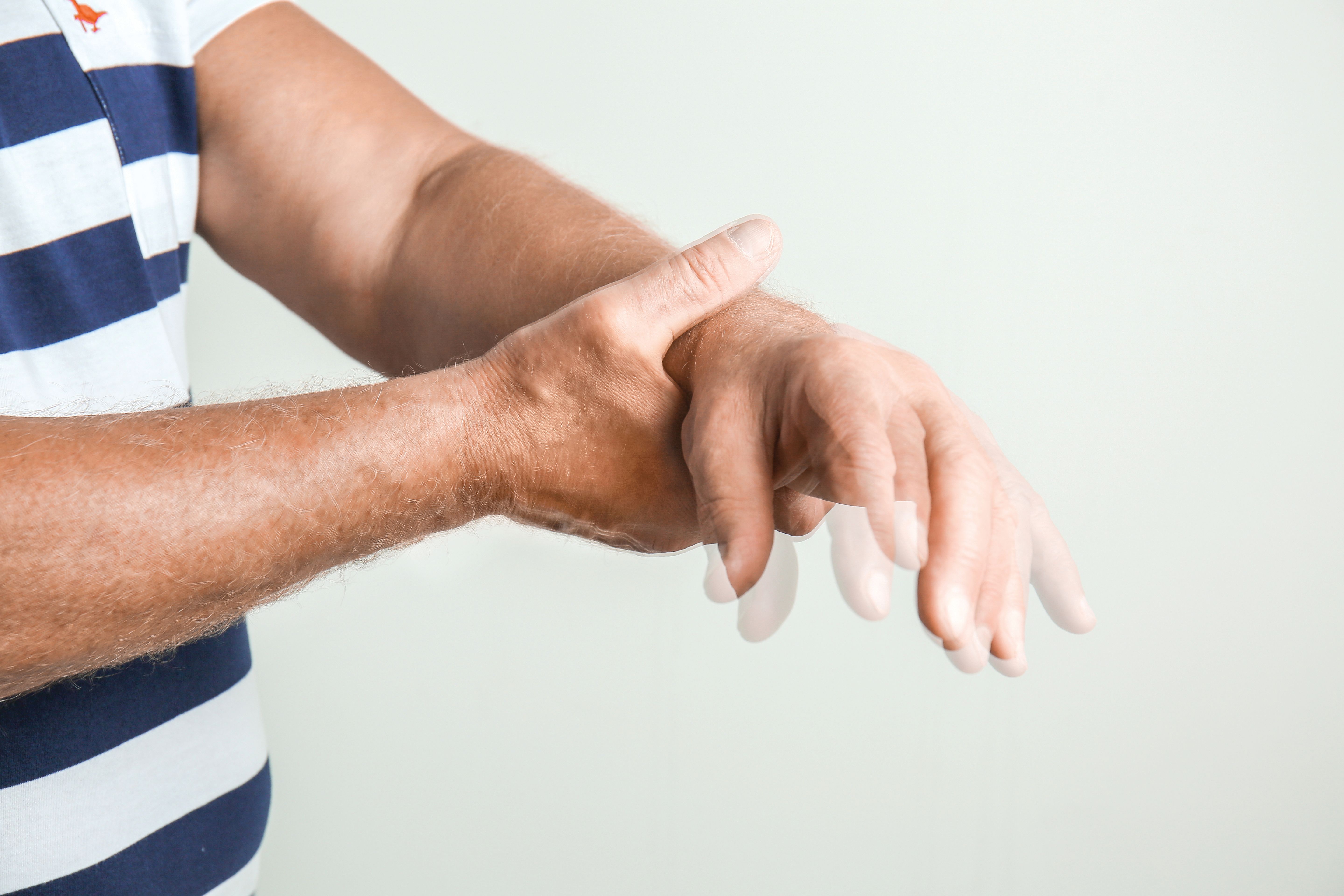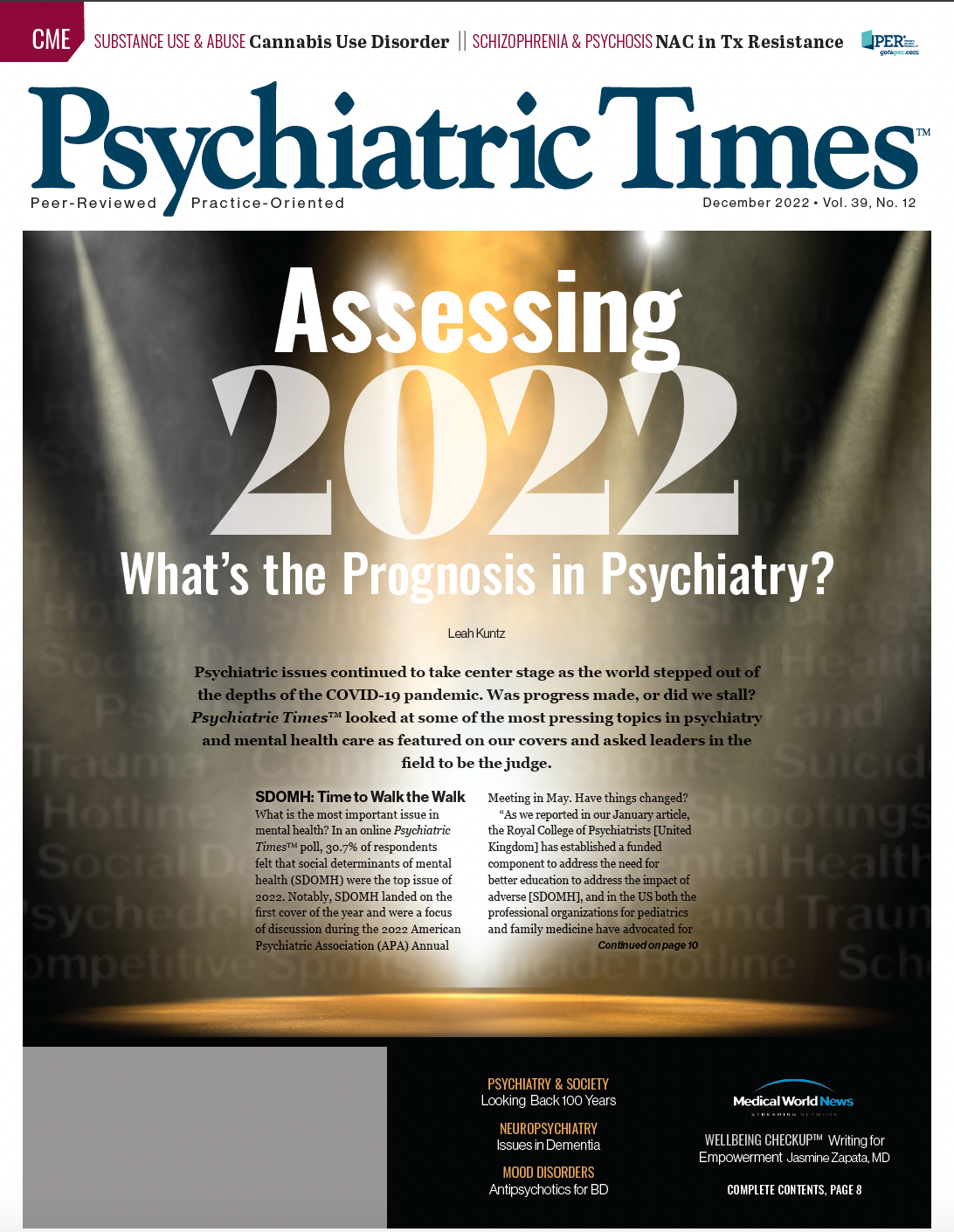Publication
Article
Psychiatric Times
Use of Antipsychotics: Risks of Tardive Dyskinesia
Author(s):
"This study served as a sobering reminder of the significant frequency of this disfiguring and sometimes disabling adverse effect, which can be irreversible."
Pixel-Shot_AdobeStock

A recent study found a 5.1% prevalence rate of tardive dyskinesia (TD) in patients with bipolar disorder (n = 1074) treated at Mayo Clinic and other sites in the Bipolar Disorder Biobank research collaborative.1 Investigators considered this rate a likely underestimate because milder cases may not have been diagnosed or reported. This study served as a sobering reminder of the significant frequency of this disfiguring and sometimes disabling adverse effect, which can be irreversible.
The study results were consistent with previously identified TD rates from second-generation antipsychotics (SGAs) found in meta-analyses—for example, a study by Carbon and colleagues2 that found an annualized rate of 2.6% per year. Risk factors that increase the rate include use in mood disorders, older individuals, women, those with alcohol use disorder, those with diabetes and cigarette dependence, and those who use anticholinergic drugs.
Additionally, a second meta-analyses by Carbon et al found a significantly greater risk of TD in participants who were actively taking a first-generation antipsychotic (FGA) compared with an SGA.3 The investigators analyzed 41 studies, which included 11,493 participants on antipsychotic medications and demonstrated an overall prevalence of TD in 25.3% of participants. Participants taking FGAs had a 30.0% prevalence of TD, while participants taking SGAs had a 20.7% prevalence of TD. The rate was 7.2% in the small number of studies (N = 4) involving patients who had only been on SGAs.
There are now 10 SGAs that are US Food and Drug Administration (FDA)–approved for acute mania, bipolar depression, and/or maintenance treatment in bipolar disorder, and their use has increased 4-fold in recent years.4 Notably, it still seems common for haloperidol to be used in managing severe mania; this puts those patients at greater risk for later TD even if they are switched to and maintained on SGAs.
The patients in the new study were on antipsychotics for a mean of 18 years, and the mean dose was equivalent to about 6 mg of haloperidol;
78% of their trials were with SGAs. Bipolar I disorder was associated with greater risk, probably because individuals with bipolar I disorder were more likely to receive antipsychotics.1
The widely accepted Schooler and Kane criteria for diagnosing TD require ruling out other potential causes of the movements, some of which are poorly fitting dentures or other dental problems, parkinsonian symptoms, restless leg syndrome, and Huntington and Wilson diseases.5 Then, using the Abnormal Involuntary Movement Scale, there should be 1 body area with a score of at least 3 (moderate severity) or 2 areas with mild movements (score of 2). The patient should have been taking an antipsychotic for at least 3 months.
There are alternative FDA-approved treatments for long-term maintenance of patients with bipolar disorder that would involve minimal risk of this adverse effect, including lithium and lamotrigine. (Reminder: Valproate and carbamazepine have not been approved for maintenance treatment.) Informed consent discussions of treatment options should certainly include the potential risk of TD with antipsychotics, but it seems (from consulting on many bipolar cases) that this often does not occur. There are other significant adverse effects from SGAs including drug-induced parkinsonism, akathisia, dystonias, significant weight gain, prolactin elevation,6 hyperlipidemia, hyperglycemia, onset of type 2 diabetes, and more.
Regarding treatment of TD, we now have 2 FDA-approved options: deutetrabenazine and valbenazine. They are expensive, and in some settings—including certain VA hospitals—they still require off-formulary approval. According to 1 meta-analysis of efficacy, valbenazine seemed to have somewhat more efficacy with a number needed to treat (NNT) of 4 versus a NNT of 7 for deutetrabenazine,7 but the other analysis concluded that both had NNTs of 5.8,9 There have been no head-to-head comparisons. Deutetrabenazine has a short half-life and requires twice-daily dosing. Adverse effects of the 2 agents in studies of patients with TD seem comparable.
Dr Osser is associate professor of psychiatry at Harvard Medical School and codirector, US Department of Veterans Affairs, National Bipolar Disorder Telehealth Program, in Brockton, Massachusetts. The author reports no conflicts of interest concerning the subject matter of this article.
References
1. Gardea-Resendez M, Taylor-Desir MJ, Romo-Nava F, et al. Clinical phenotype of tardive dyskinesia in bipolar disorder. J Clin Psychopharmacol. 2022;42(2):159-162.
2. Carbon M, Kane JM, Leucht S, Correll CU. Tardive dyskinesia risk in first- and second-generation antipsychotics in comparative randomized controlled trials: a meta-analysis. World Psychiatry. 2018;17(3):330-340.
3. Carbon M, Hsieh CH, Kane JM, Correll CU. Tardive dyskinesia prevalence in the period of second-generation antipsychotic use: a meta-analysis. J Clin Psychiatry. 2017;78(3):e264-e278.
4. Rhee TG, Olfson M, Nierenberg AA, Wilkinson ST. 20-year trends in the pharmacologic treatment of bipolar disorder by psychiatrists in outpatient care settings. Am J Psychiatry. 2015;177(8):706-715.
5. Schooler NR, Kane JM. Research diagnoses for tardive dyskinesia. Arch Gen Psychiatry. 1982;39(4):486-487.
6. Osser DN. Prolactin monitoring in first-episode psychotic patients. Schizophr Res. 2017;189:2-3.
7. Solmi M, Pigato G, Kane JM, Correll CU. Treatment of tardive dyskinesia with VMAT-2 inhibitors: a systematic review and meta-analysis of randomized controlled trials. Drug Des Devel Ther. 2018;12:1215-1238.
8. Citrome L. Valbenazine for tardive dyskinesia: a systematic review of the efficacy and safety profile for this newly approved novel medication—what is the number needed to treat, number needed to harm and likelihood to be helped or harmed? Int J Clin Pract. 2017;71(7).
9. Citrome L. Deutetrabenazine for tardive dyskinesia: a systematic review of the efficacy and safety profile for this newly approved novel medication—what is the number needed to treat, number needed to harm and likelihood to be helped or harmed? Int J Clin Pract. 2017;71(11).







